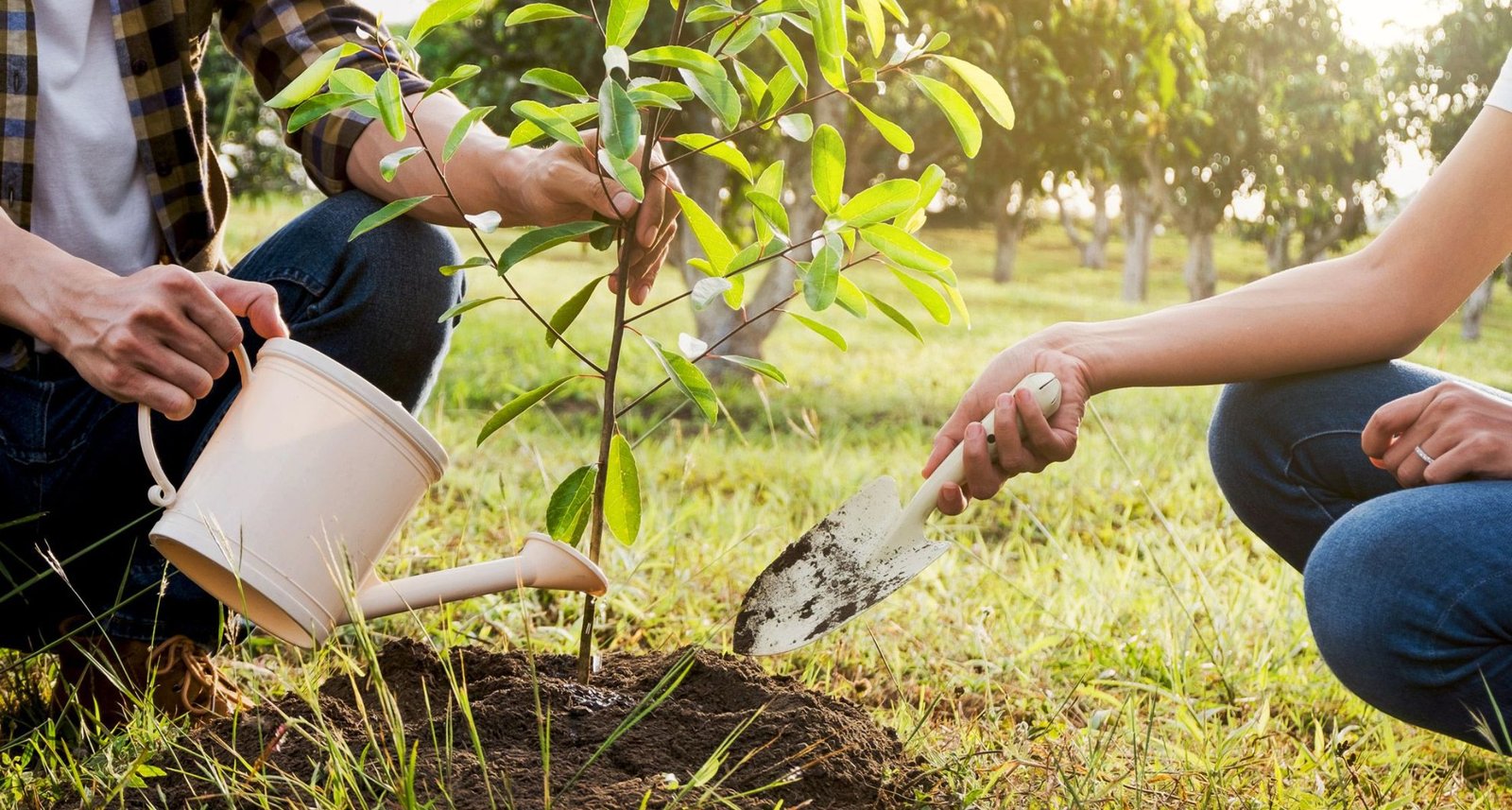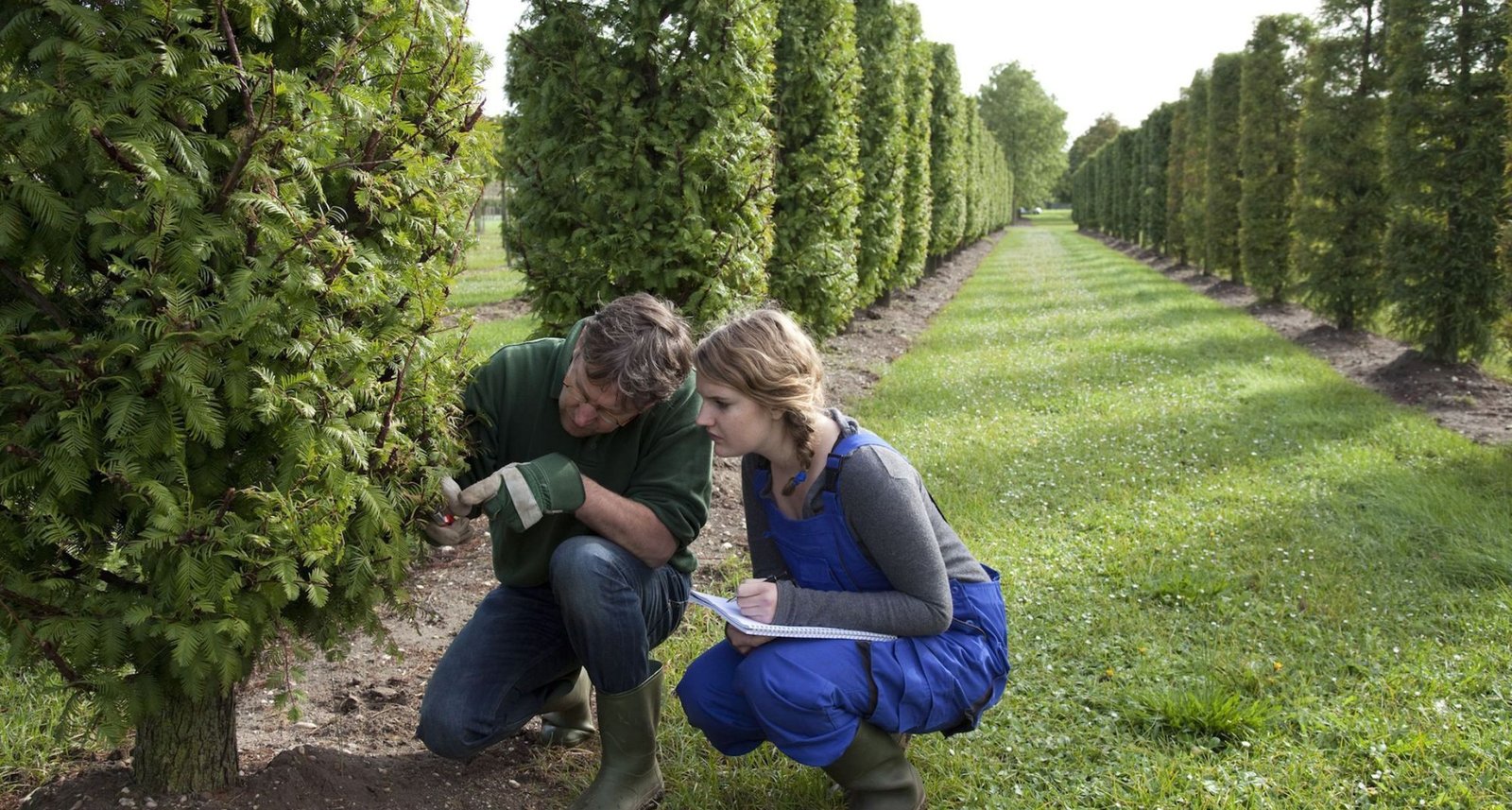Wonder why some trees are green in August, while others look tired as early as June? The difference is usually not due to luck. Rather, it is the choices done in the spring and early summer that seem to be unacknowledged. If you have ever thought about how to prepare trees to withstand heat waves, dry periods, and torrential downpours, you are in the right place. Below is your summer tree care guide that focuses on sustained growth. Things are not that complicated if you work strategically.
Water Deeply, Not Daily
Successes during summer begin below the surface. Deep watering encourages roots to extend deeper into the soil where the temperature and moisture level is more stable. Instead of quick surface sprinklings, water the soil more slowly during 30-60 minutes using a soaker hose or gator bags positioned along the drip line (the circle area beneath the outer canopy).
This should be 1-2 inches of water to be received weekly, including rain. This reduces drought stress and leaf scorch, and it prevents weak, shallow roots.
Mulch to Regulate Soil Temperature and Moisture
An adequately done mulch ring serves as an air conditioner to your tree during the summer. From a few inches off the trunk to just beyond the drip line, spread a mulch layer (shredded bark, wood chips, or leaf mold) to a depth of 2–3 inches. By lowering the temperature, minimizing evaporation, and improving soil structure as it breaks down, mulch serves the purpose of moderating temperature swings and improving soil structure. The worst scenario, the dreaded mulch volcano of the trunk, gets moisture trapped and rots, and the decomposition serves as a buffet for pests.

Prune With Purpose (and Restraint)
Although winter is the ideal time for the hardest cuts, light structural pruning during the summer can improve light penetration, remove deadwood, and reduce wind resistance. Crossing branches, suckers, and energy-draining water sprouts are ideal targets. Concentrate on cuts with a diameter of less than 1 inch, and use sharp tools to do the cuts to reduce unnecessary stress.
For mature trees or those with defects, consider cabling and bracing an ISA Certified Arborist can assess whether support systems will improve stability before storm season.
Feed the Soil, Not Just the Tree
A properly functioning food-web system will always result in tree abundance. In the case of over-fertilization, especially with quick-release nitrogen sources, growth may occur too quickly and become unfettered, opening the door for myriad pest problems. Stop and consider the more sophisticated approach of adding compost, slow-release fertilizers and grazing animals, and stimulating mycorrhizal associations that help roots reach for scarce water and nutrients. Better soil means increased uptake and stronger defenses, as well as better resistance during the summer.
Scout Pests and Diseases Weekly
Hot, humid weather is a playground for troublemakers. Once a week, spend five minutes on a canopy scan; look for chewing damage, sticky honeydew, wispy webbing and patches, or discolouration. Typical summer problems are aphids, the scale insect, borers, spider mites, powdery mildew, and the leaf spot. Detection is key. Use integrated pest management; IPM by encouraging beneficial insects and washing small infestations off with water, and treat conservatively, escalating only when the situation calls for it. For borers and systemic problems, damage burns structural, consult a professional for systemic concerns.
Protect Young and Newly Planted Trees
The first three years are important because young trees haven’t anchored deep roots which makes it easier for them to lose moisture. For protection, ‘stake’ trees replacing the stakes after the first year. Water regularly, and establish a 3ft mulch ring to keep weeds down for competition minimisation.
Consider temporary shade cloth during extreme heat waves for thin-barked species to prevent sunscald. Avoid weed trimmers near trunks—mechanical injury invites decay and disease. A simple plastic trunk guard can save a tree’s life.

Manage Soil Compaction and Oxygen Flow
Soil compaction makes it very difficult for roots to absorb oxygen and water. Summer gatherings, heavy pots, and mowers can also compress the root zone, particularly on lawns that grow over roots. In all cases, foot traffic and equipment should be excluded aside from the drip line. If your site is already compacted, vertical mulching or air spading (better left to a professional) can open channels for air and water. Even a low-tech approach, such as top-dressing with compost and mulch, can improve pore space and soil moisture retention.
Storm-Readiness: Reduce Risk Before the Wind Blows
More extensive damage can be brought on by sudden summer storms, or high winds. Identify weaknesses by inspecting the trees for branches with bark inclusions, for dying or detached limbs, or decaying pockets. Repair your trees before the winds pick up. Gently trimming the outer branches can ‘lightly prune’ the limbs without ‘lion-tailing’ to reduce the chances of damage by the wind. Power lines, buildings and other structures can also be negatively affected, so make sure you consult the professionals. This will save you money from potential damage to the trees.
A Simple, Sustainable Summer Routine
If you want a minimalist checklist that still moves the needle, try this rhythm:
- Weekly: five-minute pest and canopy scan.
- Biweekly: deep watering if rainfall is short.
- Monthly: quick mulch check, light touch-up pruning (only if needed).
- Mid-summer: soil moisture and compaction review; adjust irrigation.
- Before storms: remove obvious hazards.
Conclusion
Effective tree summer care isn’t a matter of doing everything but rather doing the right things constantly: irrigate to the depth of the roots, place mulch accurately, prune with purpose, conduct soil nurturing, and monitor the trees for signs of trouble as early as possible. When you do the right things for a tree: match species to site, thermally insulate, compact the soil, brace for a storm, and avoid a storm, the tree pays you back for decades with shade, beauty, and increased property value. And if you’d like to have an adept professional scrutinize your canopy or assist you in formulating a precise, efficient, and sustainable plan, contact NYC Tree Pro




